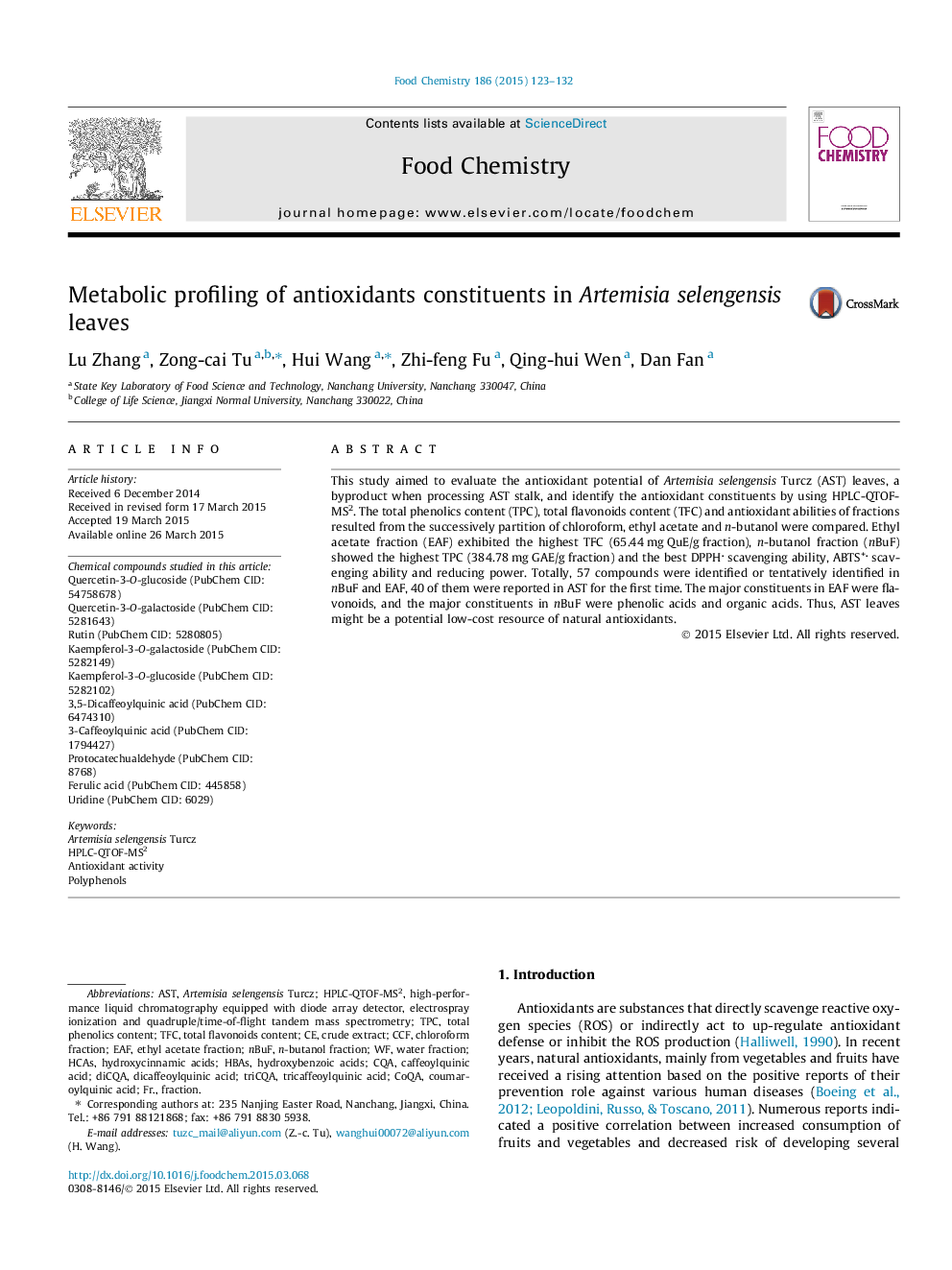| Article ID | Journal | Published Year | Pages | File Type |
|---|---|---|---|---|
| 7591220 | Food Chemistry | 2015 | 10 Pages |
Abstract
This study aimed to evaluate the antioxidant potential of Artemisia selengensis Turcz (AST) leaves, a byproduct when processing AST stalk, and identify the antioxidant constituents by using HPLC-QTOF-MS2. The total phenolics content (TPC), total flavonoids content (TFC) and antioxidant abilities of fractions resulted from the successively partition of chloroform, ethyl acetate and n-butanol were compared. Ethyl acetate fraction (EAF) exhibited the highest TFC (65.44 mg QuE/g fraction), n-butanol fraction (nBuF) showed the highest TPC (384.78 mg GAE/g fraction) and the best DPPH scavenging ability, ABTS+ scavenging ability and reducing power. Totally, 57 compounds were identified or tentatively identified in nBuF and EAF, 40 of them were reported in AST for the first time. The major constituents in EAF were flavonoids, and the major constituents in nBuF were phenolic acids and organic acids. Thus, AST leaves might be a potential low-cost resource of natural antioxidants.
Keywords
3,5-Dicaffeoylquinic acid (PubChem CID: 6474310)EAFCQACCFTPCHCAsTFCHbAS3-Caffeoylquinic acid (PubChem CID: 1794427)ASTDicaffeoylquinic acidFerulic acid (PubChem CID: 445858)Hydroxybenzoic acidscaffeoylquinic acidHydroxycinnamic acidsRutin (PubChem CID: 5280805)Crude extractAntioxidant activityTotal flavonoids contentTotal phenolics contentPolyphenolsfractionethyl acetate fractionn-butanol fractionchloroform fractionWater fraction
Related Topics
Physical Sciences and Engineering
Chemistry
Analytical Chemistry
Authors
Lu Zhang, Zong-cai Tu, Hui Wang, Zhi-feng Fu, Qing-hui Wen, Dan Fan,
